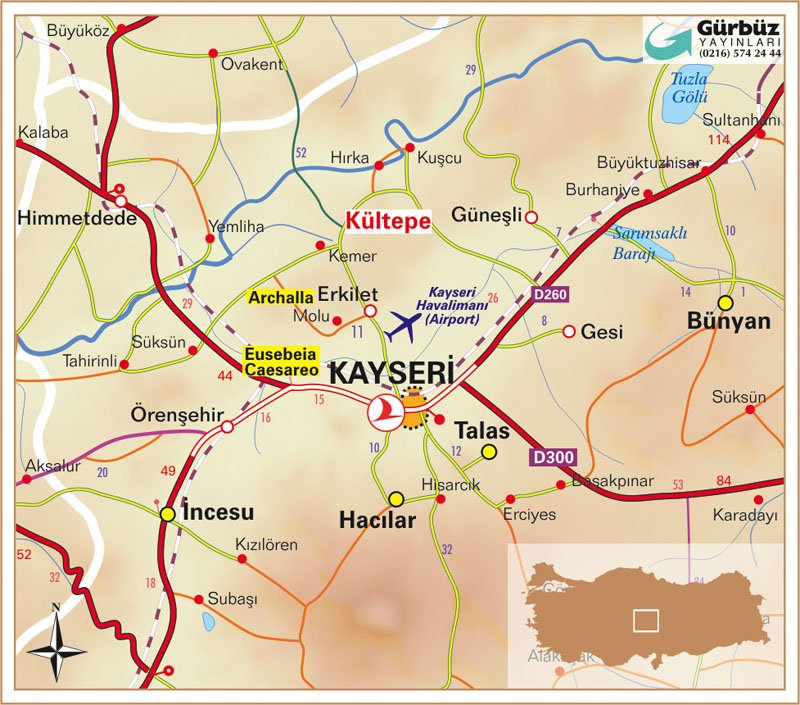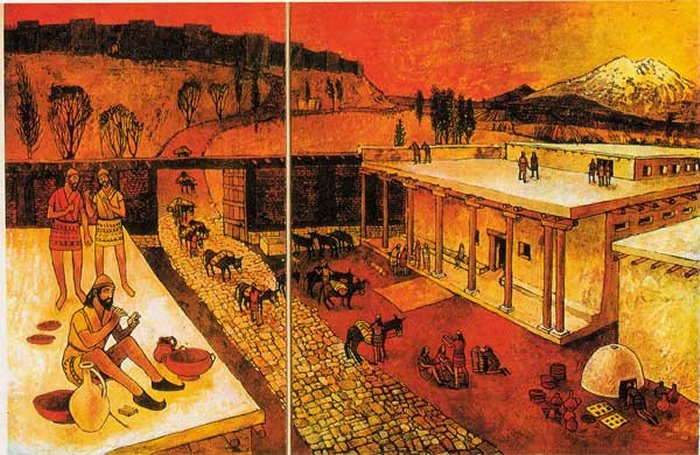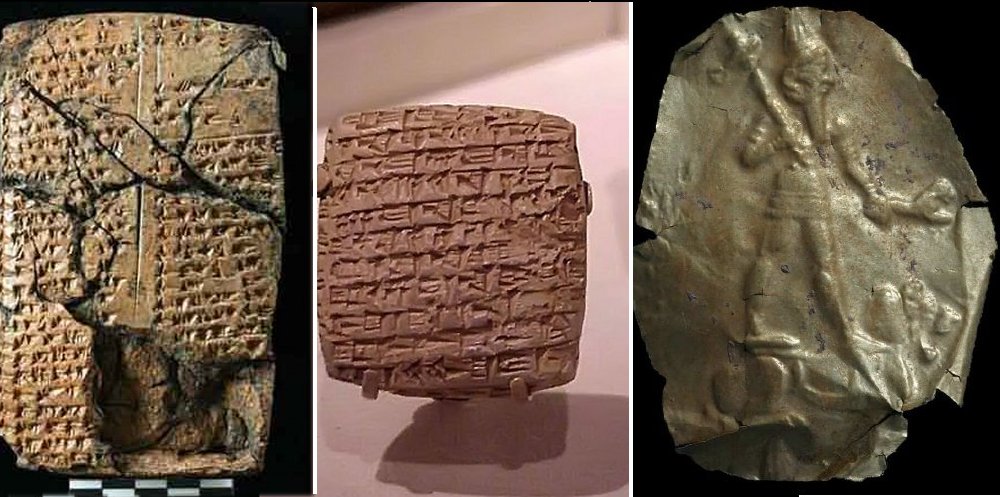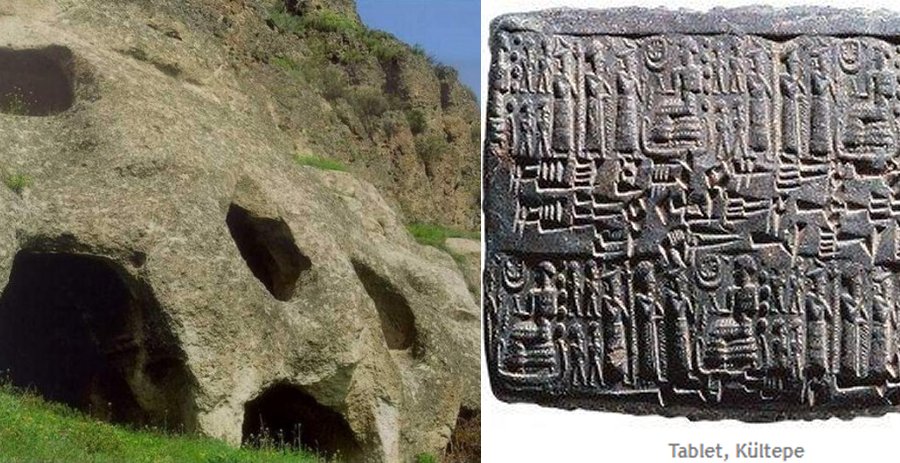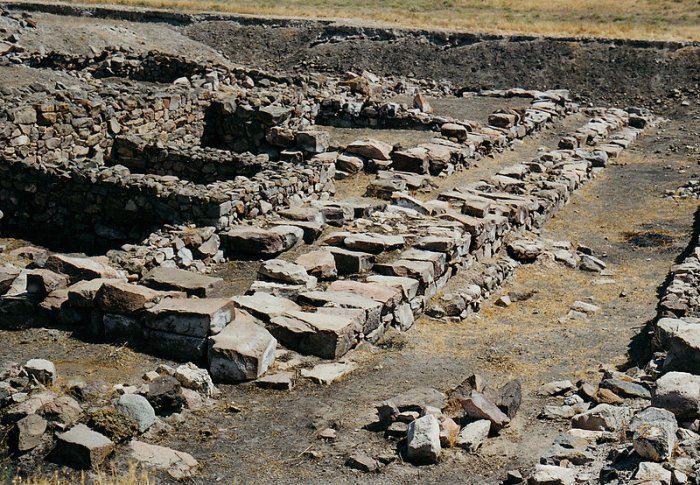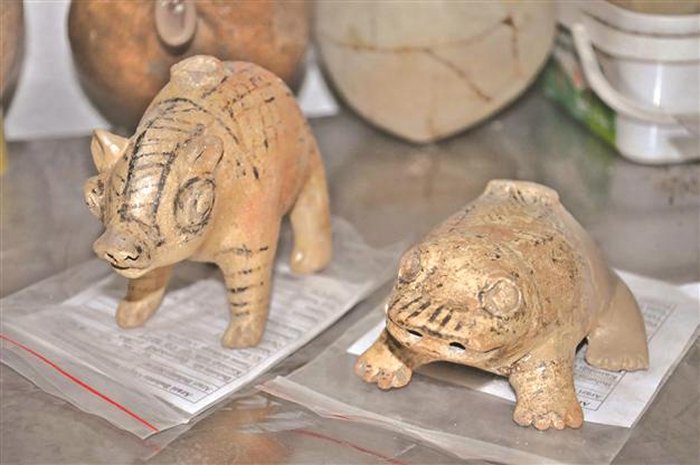Kültepe: Once Part Of The Kingdom Of Hittites And The Center of a complex network of Assyrian trade colonies in the 2nd millennium B.C.
A. Sutherland - AncientPages.com - Mysterious Kültepe was once part of the kingdom of the Hittites. Excavations revealed ancient artifacts, clay tablets, and intriguing prehistoric structures. Kültepe still has much to reveal.
Kültepe, in Turkish means “Ash Hill,” is an archaeological site located in the Kayseri Province. In the past, it was the capital of the ancient Kingdom of Kanesh and the center of a complex network of Assyrian trade colonies in the 2nd millennium B.C.
The place became a key center of culture and commerce between Anatolia, Syria, and Mesopotamia by the end of the 3rd millennium B.C. and especially during the first quarter of the 2nd millennium B.C.
Over 20,000 Clay Tablets From Cappadocia Discovered
In 1948, archaeologists started to excavate the site and they discovered tens of thousands of archaeological and textual finds.
According to UNESCO, Kültepe is not only a site of utmost importance for Anatolian archaeology, but also for world archaeology. The private archives of the Karum residents have yielded 23,500 clay tablets and envelopes to date.
These are the earliest written documents that illustrated ancient Anatolian history. Life, society, and economy at this site, even the family affairs and personal relationships of its inhabitants, were recorded on clay tablets in the Old Assyrian dialect of the Akkadian language using the cuneiform (wedge-shaped) script, the knowledge of which came into Anatolia with Assyrian merchants.
Unlike royal or temple archives discovered in other ancient centers, the cuneiform archives of Kültepe-Kanesh represent the single largest body of private texts in the ancient Near East. They were kept in archive rooms, neatly arranged inside clay vessels, wooden chests, wicker baskets, or sacks.
Ancient City Of Kültepe Was Destroyed By Fire
The fire which eventually destroyed the city must have started suddenly; as the excavations revealed many documents were still in their envelopes before the merchants could dispatch their recently written letters or open those newly received. The inhabitants left most of their possessions behind to be found by modern archaeologists.
Kültepe - historically very important site - has been successfully excavated since 1948 and still, new excavation works are organized on the Kültepe Kaniş/Karum mound that can shed light on ancient and the very early stages of trade in the region. At present most works focus on the Hittite palace at Kültepe and its surroundings.
The main goal for researchers is to investigate the first eras when the trade started 6,000-7,000 years ago in Kültepe.
The trade hub in this region was crucial for Anatolia for the Middle East as well. In the meantime, the works concentrate on the area dated to 4,500 years ago with the remains of a furnace from 4,500 years ago and also some pieces of an idol made of marble and known as the Kültepe Idol.
Several such idols were unearthed inside the sanctuaries in the palace and in neighboring places inhabited by upper-class people and also lower-class people.
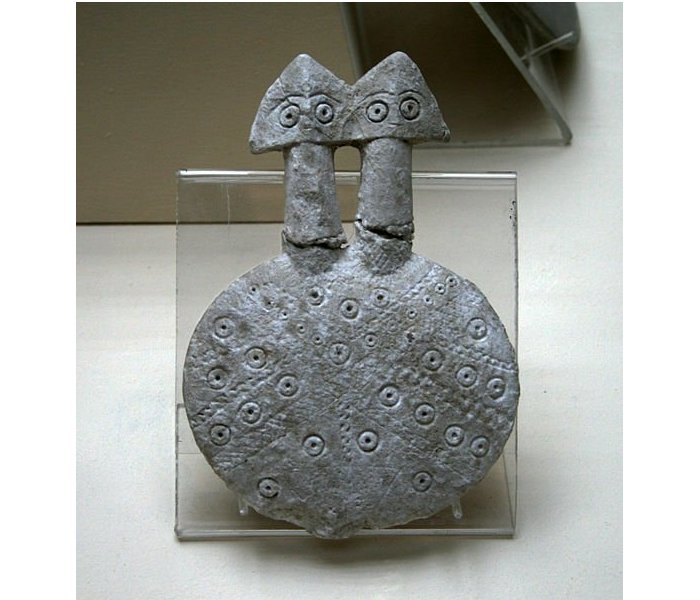
Kültepe Idol. A two-headed mother goddess figurine from Kültepe, an archaeological site in Turkey. This figurine is part of a larger group of flat marble goddess figurines found in Kültepe. Artifact located at the Museum of Anatolian Civilizations, Turkey. Image credit: Noumenon.
The region of Kültepe is a very old place with a history going back millennia and many archaeological findings attest to this history.
The place was inhabited continuously from the Chalcolithic to Roman times, and flourished as an important Hattic center, Hittite and Hurrian city, containing a large merchant colony dated to the Old Assyrian Empire from ca. 21st to 18th centuries BC.
It is a very old place. Today, Kültepe is an archaeological site, about 20 km southwest from the center of Kayseri. Once, it was the capital of the ancient Kingdom of Kanesh, a residental area of indigenous people, and its market place Karum was established in 1950-1650 B.C. by Assyrian colonies. A part of Karum was inhabited by both foreign and native traders who conducted their business.
Kültepe's geographical location contributed much to the place's flourishing period by the end of 3,000 BC to the first quarter of 2,000 BC. Kültepe's culture, politics, and trade thrived between Anatolia, Syria, and Mesopotamia. Today’s Kültepe was established by Hittites in 2000 BC.
Thousands of clay tablets mention seventeen local city-kings who rose up against the famous Naram-Sin of Akkad (ruled c.2254-2218 BC).
It is the site of the discovery of the earliest traces of the Hittite language, and the earliest attestation of any Indo-European language, dated to the 20th century BC. Other tablets mention the conquest of the city of Assur by the kings of Eshnunna, the fall of Assur, and Hammurabi of Babylon.
Written by – A. Sutherland - AncientPages.com Senior Staff Writer
Copyright © AncientPages.com All rights reserved. This material may not be published, broadcast, rewritten or redistributed in whole or part without the express written permission of AncientPages.com
Expand for referencesMore From Ancient Pages
-
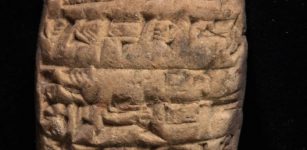 Lost City Of Irisagrig Comes To Life In Ancient Stolen Tablets
Archaeology | Jun 5, 2018
Lost City Of Irisagrig Comes To Life In Ancient Stolen Tablets
Archaeology | Jun 5, 2018 -
 Lifestyle And Face Of 7th-Century Anglo-Saxon Teen – Reconstructed
Archaeology | Jun 20, 2023
Lifestyle And Face Of 7th-Century Anglo-Saxon Teen – Reconstructed
Archaeology | Jun 20, 2023 -
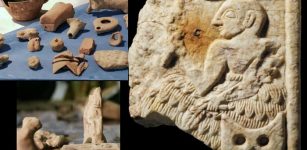 Hundreds Of Thousands Of Sumerian Artifacts Have Been Stolen From Iraq’s Museums And Archaeological Sites
Artifacts | Dec 7, 2020
Hundreds Of Thousands Of Sumerian Artifacts Have Been Stolen From Iraq’s Museums And Archaeological Sites
Artifacts | Dec 7, 2020 -
 Is Mysterious Pokaini Forest An Ancient Healing Center And Anomalous Zone?
Featured Stories | Aug 13, 2018
Is Mysterious Pokaini Forest An Ancient Healing Center And Anomalous Zone?
Featured Stories | Aug 13, 2018 -
 Lake Huron Was Home To A 9,000-Year-Old Civilization – Underwater Structures And Artifacts Reveal
Archaeology | Jun 17, 2021
Lake Huron Was Home To A 9,000-Year-Old Civilization – Underwater Structures And Artifacts Reveal
Archaeology | Jun 17, 2021 -
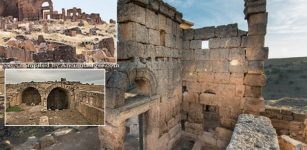 1,800-Year-Old Entrance To Turkey’s Zerzevan Castle Found Among The Ruins
Archaeology | Aug 15, 2020
1,800-Year-Old Entrance To Turkey’s Zerzevan Castle Found Among The Ruins
Archaeology | Aug 15, 2020 -
 Keshwa Chaca – Last Suspension Rope Bridge Of Inca People
Ancient Traditions And Customs | Apr 17, 2019
Keshwa Chaca – Last Suspension Rope Bridge Of Inca People
Ancient Traditions And Customs | Apr 17, 2019 -
 2000-Years Old Road Was Discovered In Manisa Province,Turkey
Archaeology | Aug 14, 2017
2000-Years Old Road Was Discovered In Manisa Province,Turkey
Archaeology | Aug 14, 2017 -
 Ancient Race Of Star Worshippers And Secret Message Stored In Unusual Monument
Ancient Mysteries | Jun 11, 2018
Ancient Race Of Star Worshippers And Secret Message Stored In Unusual Monument
Ancient Mysteries | Jun 11, 2018 -
 Mystery Of The Thirteen Towers Of Chankillo – Oldest ‘Full-Service Observatory’ In The Western Hemisphere
Featured Stories | Nov 6, 2018
Mystery Of The Thirteen Towers Of Chankillo – Oldest ‘Full-Service Observatory’ In The Western Hemisphere
Featured Stories | Nov 6, 2018 -
 Dresden Codex – Probably The Oldest And Best Preserved Book Of The Maya
Ancient History Facts | Jun 24, 2016
Dresden Codex – Probably The Oldest And Best Preserved Book Of The Maya
Ancient History Facts | Jun 24, 2016 -
 Fossils, Fires And Focus On Early Human Activity In Southeast Asia Jungles
Archaeology | Oct 14, 2024
Fossils, Fires And Focus On Early Human Activity In Southeast Asia Jungles
Archaeology | Oct 14, 2024 -
 Gilmerton Cove: Mysterious Cave System Still Keeps Its Centuries-Old Secrets
Featured Stories | Nov 27, 2021
Gilmerton Cove: Mysterious Cave System Still Keeps Its Centuries-Old Secrets
Featured Stories | Nov 27, 2021 -
 How Was The 3,600-Year-Old Nebra Sky Disc Made? New Clues
Artifacts | Nov 29, 2024
How Was The 3,600-Year-Old Nebra Sky Disc Made? New Clues
Artifacts | Nov 29, 2024 -
 Mystery Of The Boxgrave Humans – Fossils In The UK Reveal How Ancient Europeans Were Connected
Archaeology | Nov 15, 2022
Mystery Of The Boxgrave Humans – Fossils In The UK Reveal How Ancient Europeans Were Connected
Archaeology | Nov 15, 2022 -
 Vahanas – Sacred Animal Vehicles Of Hindu Gods And Goddesses
Featured Stories | Apr 30, 2017
Vahanas – Sacred Animal Vehicles Of Hindu Gods And Goddesses
Featured Stories | Apr 30, 2017 -
 On This Day In History: Island Of St. Helena – Last Residence Of Napoleon Discovered – On May 21, 1502
News | May 21, 2016
On This Day In History: Island Of St. Helena – Last Residence Of Napoleon Discovered – On May 21, 1502
News | May 21, 2016 -
 On This Day In History: Henry II Crowned King Of England – On Dec 19, 1154
News | Dec 19, 2016
On This Day In History: Henry II Crowned King Of England – On Dec 19, 1154
News | Dec 19, 2016 -
 Mysterious Skull Cult At Göbekli Tepe – Ancestor Worship Or Trophies Of Dead Enemies?
Archaeology | Jul 25, 2017
Mysterious Skull Cult At Göbekli Tepe – Ancestor Worship Or Trophies Of Dead Enemies?
Archaeology | Jul 25, 2017 -
 New Last Ice Age Findings In Palawan Cave
Archaeology | Sep 19, 2022
New Last Ice Age Findings In Palawan Cave
Archaeology | Sep 19, 2022

